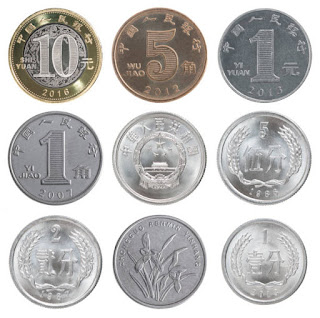Chinese New Year
It is the most important day in the Chinese calendar: more than a billion people will celebrate with their families, watch parades and pray for good fortune in the coming year.
Location
China is a highly populated East Asian nation whose vast landscapes encompass grasslands, deserts, mountains, lakes, rives, and more than 14,000 km of coastline.
Currency
The renminbi is the legal tender of the People's Republic of China and is issued by the People's Bank of China. The yuan is the basic unit of the renminbi, the name by which the currency is also known.
Standard Mandarin is the official language of the People's Republic of China and one of the four official languages of Singapore, as well as the de facto official language of the autonomous regions of Hong Kong and Macau and the Republic of China (Taiwan).
Atractions
China has a vast territory and a long history, China offers much to see and explore.
1. The Great Wall of China
The Great Wall of China is a miracle in the history of world architecture and the largest military defense project in the ancient history of the world. It was not just a wall in line, but from point to line, from line to surface, forming a complete military defense system with all the passes, military fortresses, Guancheng and military cities along the Great Wall.
2. The Terracotta Army in Xi'an
The Terracotta Army has been buried for more than 2,000 years. However, in 1974, peasants dug up and uncovered one of the largest archaeological sites in the world. In 1987 it became a cultural heritage site. It is important because the hundreds of detailed life-size models represent the army that triumphed over all other Chinese armies in the Warring States period (475-221 A.C), and were the decisive factor in the formation of a united China.
3. The Forbidden City in Beijing
It was once a "palace city" where ordinary people were forbidden to enter. An extravagant demonstration of ancient Chinese architecture, more than 8,000 rooms with elegantly designed gold roofs painted in red and yellow. The Forbidden City was the imperial palace of the Ming and Qing dynasties for 560 years until 1911. 24 emperors lived there.
4. Potala Palace in Lhasa - symbol of Tibet
The Potala Palace is a symbol of Tibet. In 1994 it was declared a World Cultural Heritage Site. It is a huge treasure house of materials and items of Tibetan history, religion, culture and art. The Palace is widely known for the precious sculptures, murals, scriptures, Buddhist statues, murals, antiques and religious jewelry inside.
5. The Bund, Shanghai, International Architecture
The Bund is one of the most recognizable architectural symbols of Shanghai. It shows itself to the world with its European colonial buildings and the skyscraper on the other side of the Huangpu, one of the most important business districts in the world. The Bund was the most prosperous area of Shanghai in the late 18th and early 19th centuries. When the first British company opened an office on the Bund in 1846, it became the epitome of elegance.
Music
Traditional music in China is different from Western music in its rhythm, meter and tones. This, apart from its importance in Chinese culture, because the origins of Chinese music are based on the sacred, aristocratic and popular and the traditional instruments used to make melodies date back to two thousand years ago.











Comentarios
Publicar un comentario